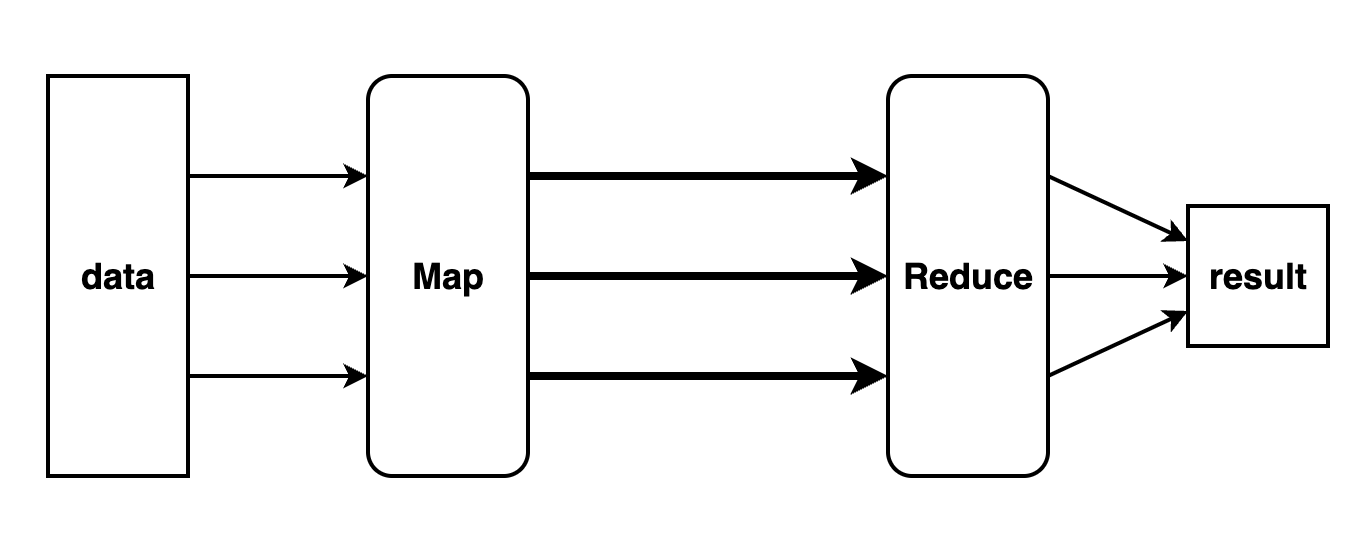工具类
Python的高级特性3

map
将传入的函数作用于可迭代对象的每一个元素上
map(function, iterable)
参数:map 可以接受两个参数,第一个是函数,第二个是可迭代对象
作用:将可迭代对象的每一个元素放在 function 中进行处理
返回:map 返回的是一个 map 对象,这是一个可迭代对象

举个栗子:
| # 使用map示例
alpha = ['a', 'b', 'c', 'x', 'y', 'z']
m = map(lambda x: x + 'i', alpha)
print(m)
print(list(m)) # 返回的map对象用m接收,然后转换成列表,打印出来
--------------------------------------------------
# Output:
<map object at 0x000001D50CEBAD00>
['ai', 'bi', 'ci', 'xi', 'yi', 'zi']
|
如果不使用 map 函数,应该这样写
| # 不适用map的示例
alpha = ['a', 'b', 'c', 'x', 'y', 'z']
def add_alpha(list1):
""" 遍历list1,每个元素都加上 i 然后放进 list2 中 """
list2 = list()
for alpha in list1:
list2.append(alpha + 'i')
return list2
m = add_alpha(alpha)
print(m)
print(type(m))
--------------------------------------------------
# Output:
['ai', 'bi', 'ci', 'xi', 'yi', 'zi']
<class 'list'>
|
同样,上面的示例还可以使用更简洁的办法,用列表生成式
前提是其逻辑比较简单,如果复杂还是要另外编写 操作函数,然后传给 map()
| alpha = ['a', 'b', 'c', 'x', 'y', 'z']
print([x + 'i' for x in alpha])
--------------------------------------------------
# Output:
['ai', 'bi', 'ci', 'xi', 'yi', 'zi']
|
此外,因为返回出来的已经不是原本放进去的可迭代对象了,所以即使元组不能修改,map 也能进行操作
| # 对元组进行操作
m = (12, 23, 28, 19, 16, 30)
print('m source: ', id(m)) # 打印原元组的地址
m = map(lambda x: x * x, m) # 对元组进行操作
print('m operated:', id(m)) # 打印修改后元组的地址
print('m is a', m) # 打印结果显示 m 是个 map对象
print(list(m)) # 把 m 转成列表打印出来
--------------------------------------------------
# Output:
m source: 2599500087840
m operated: 2599500555024
m is a <map object at 0x0000025D3E4EA310>
[144, 529, 784, 361, 256, 900]
|
filter
对可迭代对象进行过滤
Python2 中 filter 是个内置函数, Python3 中 filter 是个内置类
filter(condition_function, iterable)
参数:filter 可以接收两个参数,第一个是函数,第二个是可迭代对象
作用:将 可迭代对象 的每一个元素放在 function 中进行过滤,满足 function 中的过滤规则便返回
返回:filter 返回的是一个 filter对象,这是一个可迭代对象。

| # filter 示例
f = [12, 23, 28, 19, 16, 30]
print('f source: ', id(f)) # 打印原元组的地址
f = filter(lambda x: x >= 18, f) # 对 列表进行过滤,过滤出大于等于18的元素
print('f operated:', id(f)) # 打印修改后元组的地址
print('f is a', f) # 打印结果显示 f 是个 filter对象
print(list(f)) # 把 f 转成列表打印出来
--------------------------------------------------
# Output:
f source: 2379695132608
f operated: 2379696090368
f is a <filter object at 0x0000022A10F0AD00>
[23, 28, 19, 30]
|
| # 用列表生成式实现简单过滤
f = [12, 23, 28, 19, 16, 30]
print([x for x in f if x >= 18])
--------------------------------------------------
# Output:
[23, 28, 19, 30]
|
reduce
reduce 不是内置函数,必须导入
from functools import reduce
reduce(function, sequence, initial=_initial_missing)
参数:reduce 第一个参数接收一个带两个形参的函数,第二个参数接收一个序列
作用:把函数作用在一个序列上,函数必须接收两个参数,reduce 把结果继续和序列的下一个元素做累计运算
返回:一个计算结果

听起来有点绕,用示例解释
| from functools import reduce
def foo(x, y):
return x + y
scores = [100, 89, 76, 87]
r = reduce(foo, scores)
print(r)
--------------------------------------------------
# Output:
352
|
上面的例子中的序列还是比较简单的,如果遇到复杂的数据对象,则不能这么简单处理
| from functools import reduce
dic = [
{'name': 'Alice', 'age': 18, 'score': 78},
{'name': 'Boii', 'age': 17, 'score': 89},
{'name': 'Candy', 'age': 19, 'score': 65},
{'name': 'Dannis', 'age': 22, 'score': 99}
]
def foo(x, y):
return x['score'] + y['score'] # 第二轮就会出错
r = reduce(foo, dic)
print(r)
--------------------------------------------------
# Output:
Traceback (most recent call last):
File "d:/---Programming---/Python/Project/练习/mo2.py", line 58, in <module>
r = reduce(foo, dic)
File "d:/---Programming---/Python/Project/练习/mo2.py", line 55, in foo
return x + y['score']
TypeError: unsupported operand type(s) for +: 'dict' and 'int'
|
既然说相加,看来问题出在foo函数身上
以上面的方式再进行一次推导
第一轮:
x = {'name': 'Alice', 'age': 18, 'score': 78}, y = {'name': 'Boii', 'age': 17, 'score': 89},
则 x['score'] = 78, y['score'] = 89, result = 167
第二轮:
x = result, y = {'name': 'Candy', 'age': 19, 'score': 65},
则 x['score'] =... 问题就出在这
第一次计算之后result 给了x,x就成了整型,当然取不出 score
解决方法,改为 return x + y['score']
| from functools import reduce
dic = [
{'name': 'Alice', 'age': 18, 'score': 78},
{'name': 'Boii', 'age': 17, 'score': 89},
{'name': 'Candy', 'age': 19, 'score': 65},
{'name': 'Dannis', 'age': 22, 'score': 99}
]
def foo(x, y):
return x + y['score'] # 一个字典 + 一个整型,依然报错
r = reduce(foo, dic)
print(r)
--------------------------------------------------
# Output:
Traceback (most recent call last):
File "d:/---Programming---/Python/Project/练习/mo2.py", line 58, in <module>
r = reduce(foo, dic)
File "d:/---Programming---/Python/Project/练习/mo2.py", line 55, in foo
return x + y['score']
TypeError: unsupported operand type(s) for +: 'dict' and 'int'
|
解决方法,设置初始值
| from functools import reduce
dic = [
{'name': 'Alice', 'age': 18, 'score': 78},
{'name': 'Boii', 'age': 17, 'score': 89},
{'name': 'Candy', 'age': 19, 'score': 65},
{'name': 'Dannis', 'age': 22, 'score': 99}
]
def foo(x, y):
return x + y['score']
r = reduce(foo, dic, 0)
print(r)
--------------------------------------------------
# Output:
331
|



